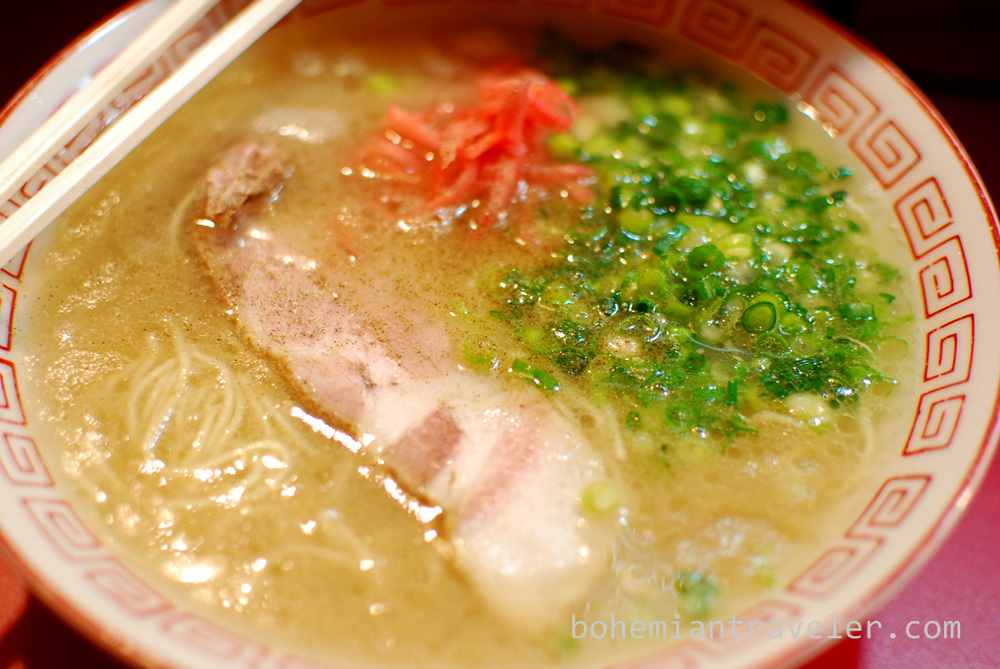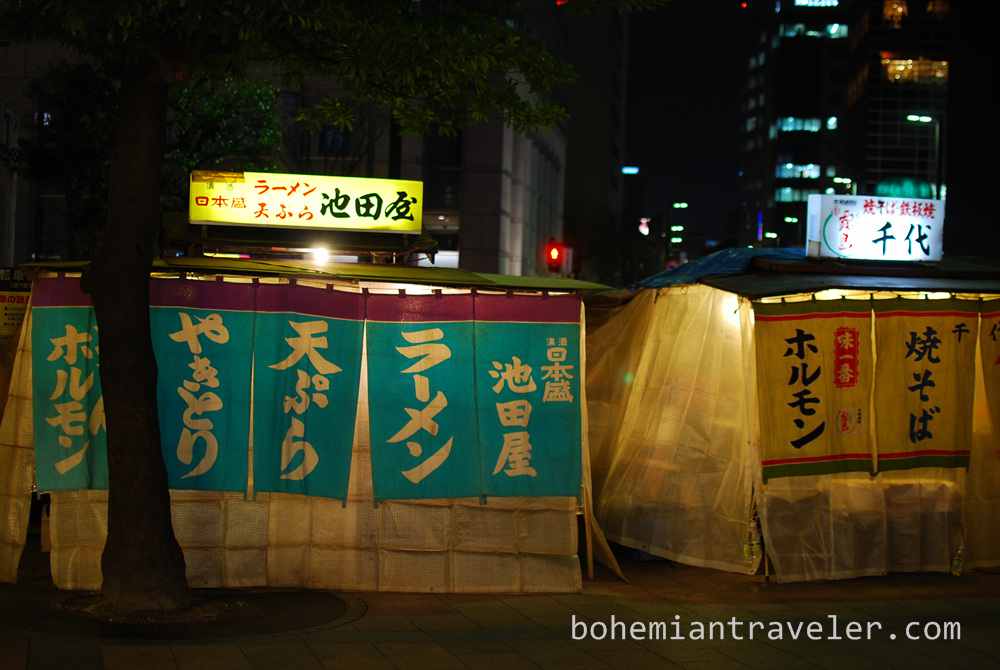For most of us, ramen is a plastic package of dried noodles and powder flavoring. For fancy ramen, we might imagine a styrofoam bowl filled with the same dried noodles and maybe even some dried meat or artificial seafood products.
Not in Fukuoka, Japan.

Here, ramen is an art. I set off for my first bowl not long after arriving on the ferry from Busan, South Korea. Every evening, venders roll out the famed street carts, or yatai of Fukuoka. Underneath the plastic coverings, patrons sit lined up on benches and stools munching away on food, snacks, all while sipping sake or beer.
I walk for about 30 minutes passing a host of yatai, some standing alone, some lining the riverbank. I finally find one I like and duck under the covering. I signal to the “master” that I’m alone and she welcomes me in. The menu is completely in Japanese, so I understand none of it. I do see that the majority of prices are between 150 and 600 yen (roughly $2–$7).

I order tonkotsu ramen, or ramen in pork broth. In a few minutes the bowl shows up in front of me. Green onions and pickled ginger are the garnishes on top along with a piece of sliced pork. The pork broth is oily and flavored well. The ramen noodles are very fresh.
My yatai mates are young, but don’t know much English. They smile, sipping Asahi Super Dry, working up enough courage to ask me: “Do you like Ramen?”
Yes I do.

I’ll be leaving town the next morning, but this will not be my last bowl of the noodle made famous in Fukuoka. Exhausted from my overnight ferry ride, I walk back through the busy streets. Fukuoka is dressed to the nines tonight. It’s Saturday. Teenagers hang out outside of arcades and convenience stores. Woman are dressed impeccably. Men in suits congregate in the red light district which I pass through on the way home.
I spend the night in a capsule hotel and my little pod’s alarm goes off at 8 am. I head out for one more bowl of ramen. This time I go to a restaurant. Ichiran is a local chain that I read good things about. Before I enter, a computer screen prompts my order. I select one ramen. No extra noodles. Extra pork slices. I insert 1,000 yen and get about a hundred back. This bowl of ramen, at $10 US, will be nearly double what my last one cost.

The machine spits out two receipts and I take them inside. An electronic board shows me which seats are free and that’s where I go next. Each of these seats is partitioned off and there is a window from which behind a server says something to me. What I don’t understand is that I’m supposed to fill out a form as to how I want my ramen. When she sees I’m not Japanese, she hands me the survey in English and I note that I’d like my noodles not too soft or too hard, spice normal, thick-cut green onions, extra garlic, and the normal amount of oil in my broth.

When my bowl arrives, I devour it. It is delicious: probably as good, maybe even a little better than last night’s.
From this point on I will think differently about ramen and conjure up an image other than the five-for-a-dollar dried instant noodles.
The post Fukuoka Japan: Where Ramen is a Real Meal appeared first on Bohemian Traveler.